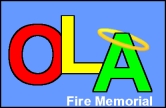|
* The 3-11 and 4-11 alarms were not explicitly called, but were implicit when the 5-11 alarm was called.
Housekeeper Nora Maloney telephoned the first alarm ("Still Alarm") at 2:42 pm. When Engine 85 arrived at the school at 2:44 pm and saw they had a working fire, Lieutenant Stanley Wojnicki called the main alarm office and requested a Box Alarm. Coincidentally, the operator had just done so, based on the volume of telephone calls reporting the fire. Within minutes, firemen realized that many children were trapped in the burning school, prompting Engineer Henry Holden to request a 2nd alarm. When 18th Batallion Chief Miles Devine arrived at the scene and realized how many potential victims there were, he requested additional ambulances and police squadrols. Ten minutes later, at 2:57 pm, the roof collapsed and Devine immediately requested a 5-11 alarm, skipping over the 3rd and 4th alarms that would normally have been called first.
Twenty-two engine companies responded to the OLA fire, along with 7 truck (hook & ladder) companies, plus numerous rescue squads, insurance patrols, ambulance companies, high pressure wagons, light wagons, towers (snorkels) and battalion chiefs. In 1958, the Chicago Fire Department consisted of 126 engine companies, 59 truck companies, and 13 rescue squads, all divided into 30 battalions in 6 divisions.
The Chicago Police Department also dispached men and equipment to the fire: approximately 100 officers, 27 squadrols, 23 three-wheeled motorcycles, and 23 squad cars. Overhead, traffic helicopter patrolman Baldy, who normally made radio traffic reports, helped emergency equipment find the best routes to and from the fire.
The record for the number of people rescued at a single fire by the Chicago Fire Department was set at Our Lady of the Angels. In less than 15 minutes, firefighters rescued at least 160 children and nuns from the school.
|
